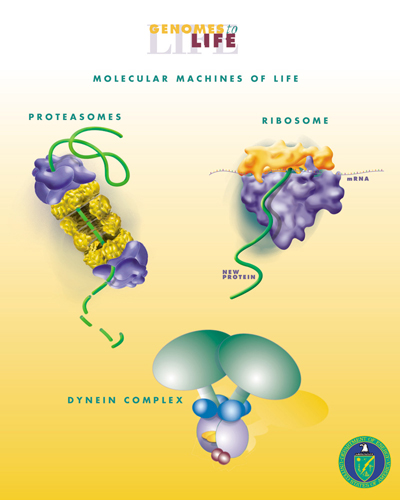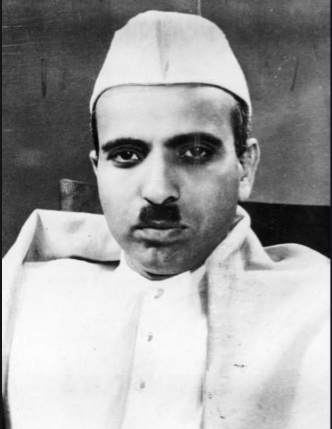|
IIT Gandhinagar
Indian Institute of Technology Gandhinagar (also known as IIT Gandhinagar or IITGN) is a public technical university located in Gandhinagar, Gujarat, India. It has been declared to be an Institute of National Importance by the Government of India. Established in 2008, IIT Gandhinagar campus is spread over 400 acres of land along the river Sabarmati. IIT Gandhinagar is ranked as one of the prestigious engineering institutions in India. History Foundation 
 IIT Gandhinagar is one of the eight
IIT Gandhinagar is one of the eight [...More Info...] [...Related Items...] OR: [Wikipedia] [Google] [Baidu] |
Public University
A public university, state university, or public college is a university or college that is State ownership, owned by the state or receives significant funding from a government. Whether a national university is considered public varies from one country (or region) to another, largely depending on the specific education landscape. In contrast a private university is usually owned and operated by a private corporation (not-for-profit or for profit). Both types are often regulated, but to varying degrees, by the government. Africa Algeria In Algeria, public universities are a key part of the education system, and education is considered a right for all citizens. Access to these universities requires passing the Baccalaureate (Bac) exam, with each institution setting its own grade requirements (out of 20) for different majors and programs. Notable public universities include the Algiers 1 University, University of Algiers, Oran 1 University, University of Oran, and Constantin ... [...More Info...] [...Related Items...] OR: [Wikipedia] [Google] [Baidu] |
Chandkheda
Chandkheda is a well-developed area in northwestern Ahmedabad . It is situated on west of Sabarmati River. History On 19 January 2008, Chandkheda Panchayat was included under Ahmedabad Municipal Corporation's jurisdiction and ceased to exist as a separate civic body. Demographics As of 2001 India census, Chandkheda had a population of 55,477. Males constitute 53% of the population and females 47%. Chandkheda has an average literacy rate of 81%, higher than the national average of 59.5%; with male literacy of 85% and female literacy of 77%. 11% of the population is under 6 years of age. Mostly populated by employees of ONGC and some small scale businessmen, this village is situated at a height and is thus almost never affected by floods which usually ravage low-lying areas as satellite almost every year. It has a post office, several banks, schools, malls, and a railway station earlier Meter Gauge, now converted to Broad Gauge, shop and business too. Development Chandkheda ... [...More Info...] [...Related Items...] OR: [Wikipedia] [Google] [Baidu] |
Electrical Engineering
Electrical engineering is an engineering discipline concerned with the study, design, and application of equipment, devices, and systems that use electricity, electronics, and electromagnetism. It emerged as an identifiable occupation in the latter half of the 19th century after the commercialization of the electric telegraph, the telephone, and electrical power generation, distribution, and use. Electrical engineering is divided into a wide range of different fields, including computer engineering, systems engineering, power engineering, telecommunications, radio-frequency engineering, signal processing, instrumentation, photovoltaic cells, electronics, and optics and photonics. Many of these disciplines overlap with other engineering branches, spanning a huge number of specializations including hardware engineering, power electronics, Electromagnetism, electromagnetics and waves, microwave engineering, nanotechnology, electrochemistry, renewable energies, mechatronics/control ... [...More Info...] [...Related Items...] OR: [Wikipedia] [Google] [Baidu] |
Computer Engineering
Computer engineering (CE, CoE, or CpE) is a branch of engineering specialized in developing computer hardware and software. It integrates several fields of electrical engineering, electronics engineering and computer science. Computer engineering is referred to as ''electrical and computer engineering'' or '' computer science and engineering'' at some universities. Computer engineers require training in hardware-software integration, software design, and software engineering. It can encompass areas such as electromagnetism, artificial intelligence (AI), robotics, computer networks, computer architecture and operating systems. Computer engineers are involved in many hardware and software aspects of computing, from the design of individual microcontrollers, microprocessors, personal computers, and supercomputers, to circuit design. This field of engineering not only focuses on how computer systems themselves work, but also on how to integrate them into the larger pictur ... [...More Info...] [...Related Items...] OR: [Wikipedia] [Google] [Baidu] |
Computer Science
Computer science is the study of computation, information, and automation. Computer science spans Theoretical computer science, theoretical disciplines (such as algorithms, theory of computation, and information theory) to Applied science, applied disciplines (including the design and implementation of Computer architecture, hardware and Software engineering, software). Algorithms and data structures are central to computer science. The theory of computation concerns abstract models of computation and general classes of computational problem, problems that can be solved using them. The fields of cryptography and computer security involve studying the means for secure communication and preventing security vulnerabilities. Computer graphics (computer science), Computer graphics and computational geometry address the generation of images. Programming language theory considers different ways to describe computational processes, and database theory concerns the management of re ... [...More Info...] [...Related Items...] OR: [Wikipedia] [Google] [Baidu] |
Chemical Engineering
Chemical engineering is an engineering field which deals with the study of the operation and design of chemical plants as well as methods of improving production. Chemical engineers develop economical commercial processes to convert raw materials into useful products. Chemical engineering uses principles of chemistry, physics, mathematics, biology, and economics to efficiently use, produce, design, transport and transform energy and materials. The work of chemical engineers can range from the utilization of nanotechnology and nanomaterials in the laboratory to large-scale industrial processes that convert chemicals, raw materials, living cells, microorganisms, and energy into useful forms and products. Chemical engineers are involved in many aspects of plant design and operation, including safety and hazard assessments, process engineering, process design and analysis, modeling and simulation, modeling, control engineering, chemical reaction engineering, nuclear engineering, biologi ... [...More Info...] [...Related Items...] OR: [Wikipedia] [Google] [Baidu] |
Civil Engineering
Civil engineering is a regulation and licensure in engineering, professional engineering discipline that deals with the design, construction, and maintenance of the physical and naturally built environment, including public works such as roads, bridges, canals, dams, airports, sewage systems, pipelines, structural element, structural components of buildings, and railways. Civil engineering is traditionally broken into a number of sub-disciplines. It is considered the second-oldest engineering discipline after military engineering, and it is defined to distinguish non-military engineering from military engineering. Civil engineering can take place in the public sector from municipal public works departments through to federal government agencies, and in the private sector from locally based firms to Fortune Global 500, ''Fortune'' Global 500 companies. History Civil engineering as a discipline Civil engineering is the application of physical and scientific principles for solv ... [...More Info...] [...Related Items...] OR: [Wikipedia] [Google] [Baidu] |
Biological Engineering
Biological engineering or bioengineering is the application of principles of biology and the tools of engineering to create usable, tangible, economically viable products. Biological engineering employs knowledge and expertise from a number of pure and applied sciences, such as mass and heat transfer, kinetics, biocatalysts, biomechanics, bioinformatics, separation and purification processes, bioreactor design, surface science, fluid mechanics, thermodynamics, and polymer science. It is used in the design of medical devices, diagnostic equipment, biocompatible materials, renewable energy, ecological engineering, agricultural engineering, process engineering and catalysis, and other areas that improve the living standards of societies. Examples of bioengineering research include bacteria engineered to produce chemicals, new medical imaging technology, portable and rapid disease diagnostic devices, prosthetics, biopharmaceuticals, and tissue-engineered organs. Bio ... [...More Info...] [...Related Items...] OR: [Wikipedia] [Google] [Baidu] |
Narendra Modi
Narendra Damodardas Modi (born 17 September 1950) is an Indian politician who has served as the Prime Minister of India, prime minister of India since 2014. Modi was the chief minister of Gujarat from 2001 to 2014 and is the Member of Parliament, Lok Sabha, member of parliament (MP) for Varanasi (Lok Sabha constituency), Varanasi. He is a member of the Bharatiya Janata Party (BJP) and of the Rashtriya Swayamsevak Sangh (RSS), a right-wing politics, right-wing Hindutva paramilitary volunteer organisation. He is the longest-serving prime minister outside the Indian National Congress. Modi was born and raised in Vadnagar, Bombay State (present-day Gujarat), where he completed his secondary education. He was introduced to the RSS at the age of eight. Modi became a full-time worker for the RSS in Gujarat in 1971. The RSS assigned him to the BJP in 1985 and he rose through the party hierarchy, becoming general secretary in 1998. In 2001, Modi was appointed chief minister of Guja ... [...More Info...] [...Related Items...] OR: [Wikipedia] [Google] [Baidu] |
Chief Minister Of Gujarat
The chief minister of Gujarat is the head of government, chief executive of the government of the Indian state of Gujarat. The governor appoints the chief minister, whose Cabinet (government), council of ministers are Cabinet collective responsibility, collectively responsible to the assembly. The chief minister's term is for five years and is subject to no term limits, given that he has the confidence of the assembly. The state of Gujarat was created on 1 May 1960, composed of the Gujarati language, Gujarati-speaking districts of Bombay State following the Mahagujarat Movement. Jivraj Narayan Mehta of the Indian National Congress, INC was the inaugural chief minister. Narendra Modi of the BJP is the longest serving chief minister for twelve and a half years from 2001 to 2014. He resigned in 2014 to become the List of Prime Ministers of India, 14th prime minister of India. He was succeeded by Anandiben Patel who became the state's List of female Indian chief ministers, first wom ... [...More Info...] [...Related Items...] OR: [Wikipedia] [Google] [Baidu] |
Sabarmati River
The Sabarmati River is one of the major west-flowing rivers in India. It originates in the Aravalli Range of the Udaipur District of Rajasthan and meets the Gulf of Khambhat of the Arabian Sea after travelling in a south-westerly direction across Rajasthan and Gujarat. of the river length is in Rajasthan, while is in Gujarat. Course The Sabarmati River originates in the Aravalli Range in the Indian state of Rajasthan. The total length of the river is . After travelling in Rajasthan it flows into the Indian state of Gujarat where it is joined by a left bank tributary, Wakal, near the village Ghonpankhari. From there, the river continues southwest to Mhauri and meets a right bank tributary, the Sei River. Continuing its journey, it is joined by a left bank tributary, the Harnav River, before entering the Dharoi reservoir. After the Sabarmati passes the Dharoi dam it meets another left bank tributary, the Hathmati River. From there, the river flows past the city of Ahmeda ... [...More Info...] [...Related Items...] OR: [Wikipedia] [Google] [Baidu] |







